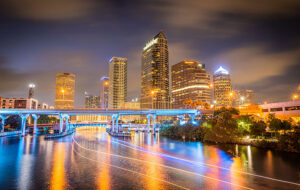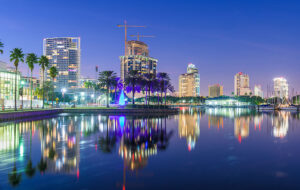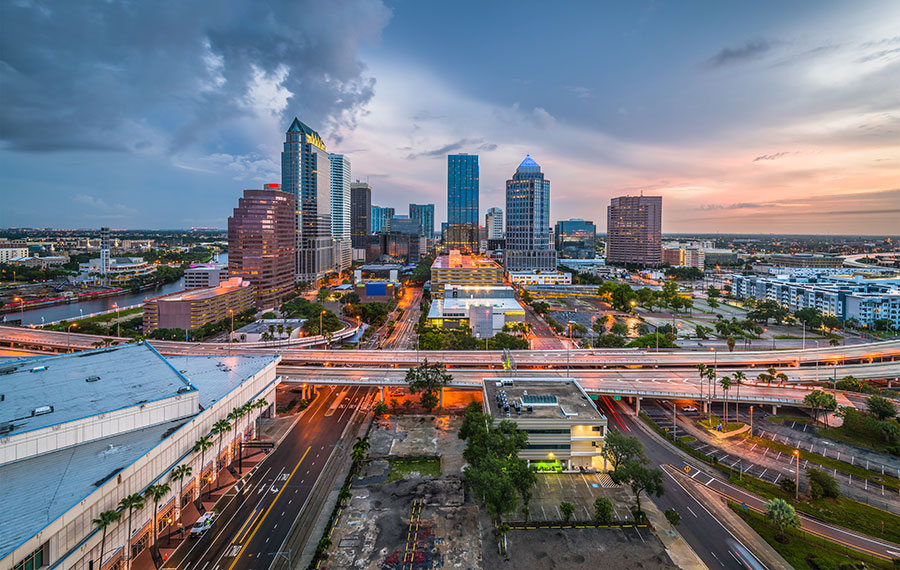
Welcome to Tampa, the bustling city on Florida’s Gulf Coast, known for its sunny weather, beautiful bay, and rich cultural heritage. If you’re planning a trip to Tampa or are simply curious about this vibrant destination, you won’t want to miss out on these fun facts that will give you an insider’s look at the city. From surprising historical events to unique local traditions and everything in between, get ready to discover all the fascinating aspects of Tampa that make it one of the most popular tourist destinations in the Sunshine State. So grab your sunglasses and let’s dive into these fun facts about Tampa that will make you fall even more in love with this exciting city!
1) Tampa’s name may originate from the Calusa language for “sticks of fire.”
The origins of the name “Tampa” have been the subject of many debates and disputes among researchers and historians. Although there are different opinions and theories, the prevalent idea is that it comes from the native Calusa language and translates as “sticks of fire”. Some experts suggest that this name could refer to the numerous lightning strikes that hit the area during the summertime. Others believe that it may stem from the indigenous practice of controlled burning in the palmetto fields. Whichever theory is correct, the name’s origin remains an enigma that adds to the city’s unique identity and charm.
2) Bayshore Boulevard is the longest continuous sidewalk in the U.S.
Bayshore Boulevard in Tampa offers 4.5 miles of stunning views and is more than just the longest continuous sidewalk in the country. What makes it even more remarkable is the parade of extraordinary homes that line it, many of which are on the National Historic Register. These handsome dwellings and lovely gardens are located in the Old Hyde Park neighborhood, and are sure to delight any visitor taking a stroll. The sidewalk is comfortably wide at 10 feet and stretches from Columbus Statue Park at Platt Street to Gandy Boulevard. For those on bicycles, three miles of the expanse include a bike lane running north-bound from Rome Avenue to Gandy Boulevard. Whatever your preferred mode of transport, Bayshore Boulevard is a great spot to check out.
3) Tampa is known as the Lightning Capital of North America.
Tampa is known for lightning, and not just because of its NHL hockey team. Surprisingly, Tampa can outperform even the Amazon River Basin and Lake Victoria, two areas hailed as world leaders in lightning activity. During the summer, the Tampa area experiences as much, if not more, lightning than these hotspots. However, as fall approaches, the frequency of thunderstorms decreases, reducing the yearly average and disqualifying Tampa from world recognition.
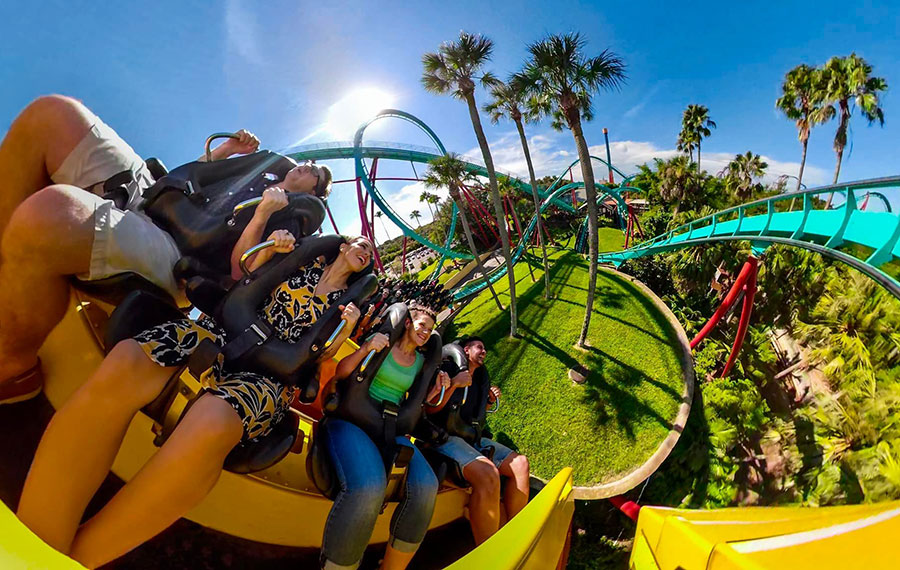
4) Busch Gardens began as a free-admission garden surrounding a brewery.
Anheuser-Busch’s new Tampa brewery was a sight to behold when it officially opened on June 1, 1959. The sprawling facility was unlike anything people had ever seen, offering beer tastings, a bird garden, and even brewery tours. What’s more, admission to Busch Gardens, as the park was later known, was completely free. This made it a popular destination for locals and tourists alike, who were eager to explore the grounds and sample some of the famous beer. However, the good times were not meant to last. In 1970, the decision was made to end free admission in order to fund a massive expansion project. Over the next ten years, the park would undergo a $12.6 million transformation that would begin its rise to one of the premiere amusement parks in the world.
5) Port Tampa Bay is the largest port in the state.
Port Tampa Bay is a behemoth in the shipping industry. With a whopping 1,000 acres of industrially zoned land and deep-water access, the port is continuously expanding its cargo facilities. But it’s not just an industrial hub. Port Tampa Bay is also one of America’s most popular departure ports for western Caribbean cruises. Four major cruise lines – Carnival Cruise Lines, Royal Caribbean International, Holland America Line, and Norwegian Cruise Line – call Port Tampa Bay home. And even AIDA Cruises includes it as a port of call. Its three cruise terminals provide top-notch service to millions of passengers each year. It’s no wonder why Port Tampa Bay is lauded as a leader in both trade and tourism.
6) The annual Gasparilla Pirate Fest has been held every January since 1904.
Every year, in the month of January, the streets of Tampa transform into a pirate’s paradise. It’s the time of the year when the annual Gasparilla Pirate Fest takes over the city. Residents don their pirate hats and eye patches, and the Parade of Pirates takes center stage. The parade is a sea of colors with floats, marching bands, and thousands of revelers. The friendly invasion led by José Gaspar, or as he’s known locally, Gasparilla, is a popular figure in Florida folklore. The event has been a tradition since 1904 and is one of the most anticipated events of the year. Gasparilla Day is marked on every local’s calendar, and it’s a day when everyone can let loose and embrace their pirate spirit.
7) Columbia Restaurant in Ybor City is the oldest restaurant in Florida.
For over a century, the Columbia Restaurant in Ybor City has been a staple of Florida’s culinary scene. As the oldest continuously operated restaurant in the state, it has quite the reputation to uphold. And uphold it does, serving up Spanish and Cuban cuisine to satisfied customers year after year. But what really sets this restaurant apart is its sheer size. With 15 dining rooms spread over 52,000 square feet, it can accommodate up to 1,700 guests at one time. In fact, it’s not just the largest Spanish restaurant in the United States – it’s the largest in the entire world. All of this makes the Columbia Restaurant truly unique. It’s no wonder it’s been owned by the Hernandez-Gonzmart family for five generations – it’s a Tampa legacy worth keeping alive.
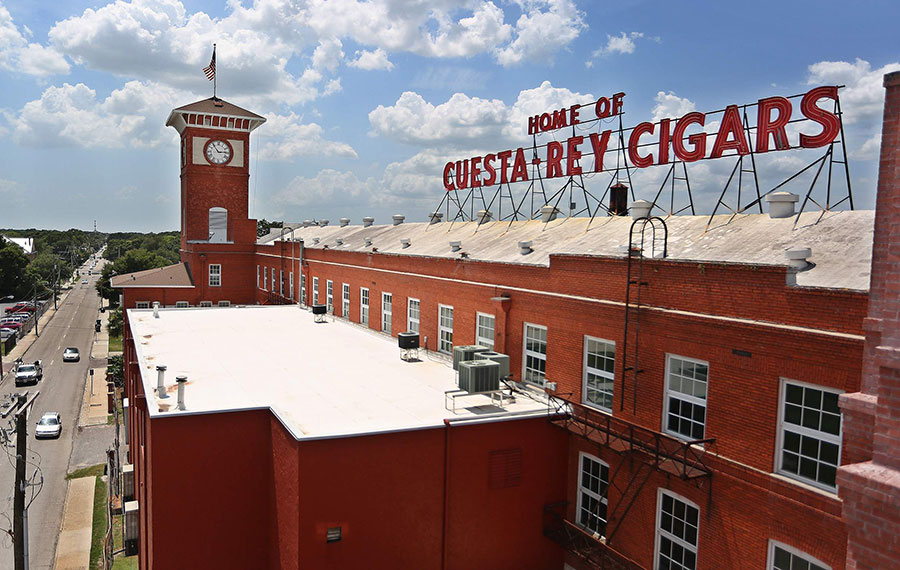
8) ZooTampa at Lowry Park had a humble beginning as a small campus animal exhibit.
For those looking for a taste of Tampa’s history along with a variety of exotic animals, ZooTampa at Lowry Park is the place to go. Starting out as a small collection of animals in Plant Park at the University of Tampa, it found its home in Seminole Heights in 1957, taking on the name Lowry Park Zoo and even adding in some rides and entertainment. Unfortunately, by the 1980s, the animal enclosures were in disrepair. But, with extensive fundraising and a redesign in 1987-1988, the zoo was rebuilt and reopened to the delight of residents and visitors alike. Since then, new sections and attractions are continuously added, often with a specific geographic theme. So whether you’re an animal lover or just want to explore Tampa’s past, ZooTampa at Lowry Park is a worthwhile visit.
9) Ybor City’s cigar industry gave Tampa the nickname “Cigar City.”
It was a humble beginning, but one that would eventually change the entire landscape of the city. In 1886, the Sanchez y Haya cigar company opened its doors on 7th Avenue in Ybor City and rolled its very first cigar. And thus began a revolution that would see hand-rolled cigars become the primary industry in Tampa. In the following decades, hundreds of cigar factories sprang up across the region, providing employment for tens of thousands of residents and propelling what was once a small town into a bustling metropolis. The legacy of this industry is still felt today – at its peak, more than 500 million cigars were produced annually, with their unmistakable aroma and taste being enjoyed all over the world, from board rooms to pool halls to even royal palaces.
10) Quite a few famous blockbuster movies were filmed in Tampa.
Tampa is no stranger to the glitz and glamour of Hollywood. Over the years, several blockbuster movies have been filmed in the sunshine state’s third largest city. Scenes from the 1990 movie Goodfellas were filmed at ZooTampa at Lowry Park. The suburban neighborhoods in Edward Scissorhands (also 1990) were filmed in Lutz, just north of Tampa. More recently, the 2012 film Magic Mike showcased the historic Amphitheatre nightclub in Ybor City where Channing Tatum (and his character) got his start. These locations have not only put Tampa on the map but also showcased the city’s versatility as a filming location. It’s no wonder why film producers continue to flock to this incredible city for their movies.
11) The Cuban sandwich was imported to America for the first time thanks to Tampa’s cigar industry.
The history of the Cuban sandwich is rooted in the immigration of Cubans in the late 1800s and early 1900s. As they settled in Ybor City to work in the cigar factories, a vibrant community formed. Soon, the Cuban sandwich became a staple food for many working-class residents in Tampa. The affordability and convenience made it a favorite meal option, and it quickly became popular. Later, Miami saw a similar influx of Cubans in the 50s, which also contributed to the popularity of the sandwich. However, the Tampa-style Cubano was unique in its addition of Genoa salami, a likely influence by the Italian community in Ybor City. Today, the Cuban sandwich remains a beloved classic, with its rich history apparent in every bite.
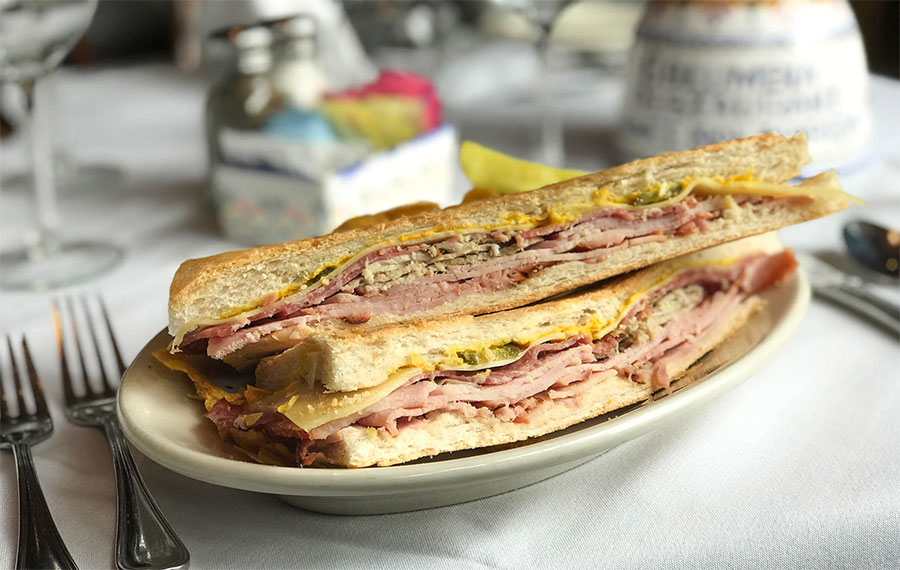
12) A rumor about guava trees helped launch Tampa’s cigar industry.
In the late 1800s, Gavino Gutierrez embarked on a journey from New York to Tampa Bay in search of wild guava trees. Working for a tropical fruit packing firm, he had heard that this area in Florida was abundant with these trees. However, he soon discovered that the environment was too harsh for guava trees to grow. On his return trip, Gutierrez made a stop in Key West where he met Vicente Martinez-Ybor, a cigar manufacturer. He shared his belief that Tampa would be an ideal location for Martinez-Ybor’s cigar operation to relocate. Martinez-Ybor was convinced, and so he moved to Tampa, creating what would become known as Ybor City. It’s fascinating to think that if Gutierrez hadn’t made that fateful trip to Tampa, the history of Ybor City and even Florida as a state could have been quite different.
13) Snowcat Ridge spent over a million dollars researching the snow-making process.
Snowcat Ridge, located in Dade City north of Tampa, is home to an awe-inspiring winter experience that attracts visitors from far and wide. But have you ever wondered how they create snow in a place where snow is virtually unheard of? Well, Snowcat Ridge has invested over a million dollars to research the snow-making process, and it’s truly fascinating. By shooting cold compressed air through a nozzle, the system splits water into tiny droplets, which are rapidly cooled to form tiny ice pellets. A giant fan then propels these “seeds” into the air with the fine mist of water droplets, creating the perfect conditions for snowflake formation. Ultimately, Snowcat Ridge creates enough snow to fill 10,000 square feet for its attractions. It’s nothing short of magical!
14) During Prohibition, Tampa cornered the market on illegal alcohol.
Tampa has a rich history of pirates and smuggling, and it seems that it carried over into the prohibition era. For 16 years after the Prohibition Act, Tampa was notorious for its non-compliance with federal and state prohibition laws. It became one of the “wettest” spots in all of America. In 1930 alone, reports claim that 130 different retailers were secretly selling moonshine to local speakeasies and underground nightclubs. Bootleggers in Tampa made use of the tried and tested methods that their pirate ancestors employed to smuggle alcohol across the bay and even the Gulf. When prohibition ended, so did this hidden industry.
15) Ybor City is known as one of the most haunted towns in the country.
If you’re fascinated by ghost stories and history, Ybor City in Florida might be the perfect destination for you. With a number of haunted locations and eerie tales, this small town has a reputation for being one of the most haunted places in the U.S. One of the most famous buildings in Ybor City is the Cuban Club, which is said to be home to several hundred ghosts. If you’re brave enough, you might hear strange noises and even see ghostly figures lurking in the shadows. Another spooky spot is the Florida Brewery, which has a long history of paranormal activity. The Tampa Theatre is another location with plenty of ghost stories, and many visitors claim to have seen and heard strange things while watching a movie. And don’t forget about Fort Brooke Garage, a seemingly ordinary parking structure that’s actually built on the site of a former military fort. These locations are just a few examples of the haunted places in Ybor City that are sure to give you goosebumps.

16) The bay area has never reached temperatures in the three-digits.
Tampa is known for its beautiful beaches, amusement parks, and subtropical heat. The city experiences moderate temperatures all year round, making it a popular vacation spot for tourists seeking an escape from harsh winters or blistering hot summers. What’s truly remarkable about the Tampa Bay area’s climate is that it has never reached temperatures in the three-digits. Records dating back to 1891 show that the highest temperature recorded in Tampa was only 99 degrees Fahrenheit (37 Celsius). With such comfortable temperatures, it’s no wonder so many people flock to this stunning city to soak up the sun and take in all of the unique sights and sounds Tampa has to offer.
17) La Segunda Bakery is the world’s largest producer of Cuban bread.
For those who know and love deliciously fresh Cuban bread, La Segunda Central Bakery is a household name. Not only is it the highest volume producer of this delectable bread in the world, but it has maintained its commitment to quality by relying on hand labor for much of its production process. For La Segunda’s third generation owner, there is simply no substitute for the tradition and expertise that comes with making each loaf by hand. Even with 18,000 loaves coming out of the ovens each day, every loaf is still made with the utmost care and attention to detail – ensuring that each bite is as delicious as the last. It’s this kind of commitment to quality that has made La Segunda in Ybor City a true icon in the bakery world.
18) Tampa holds the distinction of “Death Metal Capital of the World.”
Tampa may be known for its warm weather and beautiful beaches, but it also played a significant role in the development of one of the most nonconformist genres of music: death metal. In the mid-1980s to early-1990s, the Morrisound recording studio in Temple Terrace established itself as the go-to spot for death metal bands looking to record their music. The brothers behind the studio, Jim and Tom Morris, aimed to create a sound that was both jarring and unnerving, a reflection of the horror-inspired lyrics that often accompanied the music. Some of the most influential death metal bands got their start in Tampa, including Cannibal Corpse, Morbid Angel, and Obituary. These bands, and many others, helped establish death metal as a genre and cement Tampa’s place in music history.
19) The biggest export out of Tampa is phosphate.
Central Florida’s phosphate region has a rich history, dating back to 1888 when strip mining began. In the decades that followed, the Tampa region became a driving force in worldwide phosphate production, accounting for almost 30% of the total by the 1980s. Currently, almost three-quarters of U.S. phosphate production comes from the Tampa area. Not only is phosphate mining a major industry, but it also plays a significant role in the economy of the Tampa Bay area, with 93% of the region’s exports being composed of phosphates. Ultimately, the vast majority of mined phosphate goes into crop fertilizer, making it an essential resource for agriculture worldwide.
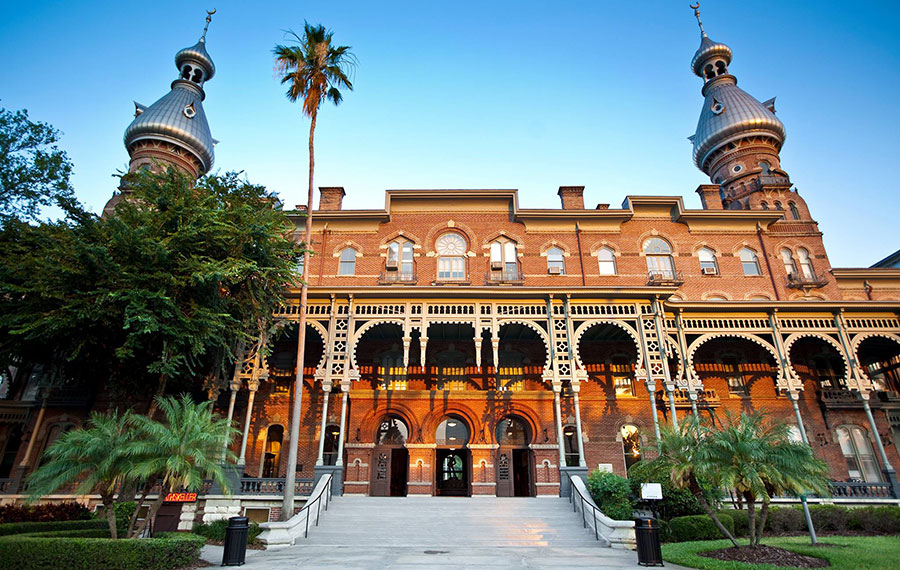
20) Babe Ruth may have hit his longest home run at Tampa’s Plant Field.
The year was 1919, and baseball was reaching its zenith of popularity in the United States. Stars like Babe Ruth captured the hearts of millions with their incredible athleticism and prowess on the field. And on April 4th of that year, Ruth left fans at Tampa’s Plant Field stunned when he hit what was possibly the longest home run ever recorded, clocking in at a monster 587 feet. Since then, sports historians have determined the distance may have been 550 feet or so, making it Ruth’s second longest homer, but still a whopper. You can see the iconic baseball on display at the Henry B Plant Museum today, not far from where Plant Field once stood.
21) A community of wild chickens roams around Ybor City.
In 1885, a devastating fire in Key West forced Vicente Martinez Ybor to move his factories and workers to Tampa, founding what would become Ybor City. His Cuban workers brought their chickens with them on this journey. In Havana, chickens were an important food source and even used for cockfighting. Today, you can find these feisty chickens roaming the streets of Ybor City, amusing tourists and locals alike. They have become a beloved symbol of Cigar City history, and even given protected status under the city’s Bird Sanctuary Law. So, next time you visit Tampa, keep an eye out for these feathered friends and appreciate their fascinating history.
22) The Henry B. Plant Museum was once a resort-style hotel.
Step back in time and take a journey to the 1880s when Henry Bradley Plant was busy constructing an empire of railroads, steamships, and hotels. Ambition and desire led him to build his greatest achievement, the Tampa Bay Hotel, with no limits to the luxurious amenities it provided. From its advanced fireproof construction to its electrically equipped rooms, the hotel boasted 511 suites. The hotel’s 150-acre grounds had something for everyone with a golf course, tennis courts, and spa facilities. Since 1933, it no longer functions as a hotel, it’s now home to The Henry B. Plant Museum and The University of Tampa. No tour of Tampa is complete without experiencing the history and grandeur of this majestic palace, which continues to capture the imagination of all who step into its hallowed halls.
23) The SS American Victory docked in Tampa Bay has served in three wars.
The SS American Victory is a historical vessel that has stood the test of time and witnessed some of the most significant events of the 20th century. Having served in World War II, the Korean War, and the Vietnam War, this ship carries immense historical significance. As one of the several Victory ships scheduled to be destroyed in the late 1990s, the American Victory faced an uncertain fate. Luckily, this vessel was saved by preservationists, who began their efforts to restore it in 1998. Today, the American Victory proudly stands as a museum ship and memorial for all to visit and appreciate. It arrived at its Tampa Bay home in 1999, and it continues to be a source of great pride for the local maritime community.

24) Tampa hosts the Florida State Fair in February, the first state fair to be held in the U.S. each year.
Get ready to experience the best of Florida at the annual Florida State Fair held in the beautiful city of Tampa. This 11-day event usually held in February is the perfect opportunity for visitors to indulge in indoor and outdoor exhibits, thrilling rides and sensational shows. Beyond the excitement of the fairgrounds, guests can also explore the state’s rich agricultural industry, which the fair proudly showcases. No visit to the fair is complete without trying out some of Florida’s iconic food oddities such as chocolate-covered bacon and Buffalo chicken chimichanga. With so much to discover, be sure to mark your calendars for an unforgettable adventure at the Florida State Fair.
25) The Straz Center is the second largest performing arts complex in the Southeastern U.S.
Nestled in the heart of the Southeastern United States lies a cultural hub that is home to world-class performances, productions, and events. With over 335,000 square feet of space, this venue ranks as the second largest performing arts complex in the region, behind only the Arsht Center in Miami. From grand operas and Broadway shows to concerts and special events, this venue has something to offer everyone. Not only does it provide entertainment to numerous guests each year, but it is also an important contributor to the local economy, generating $100 million annually and 100,000 hotel room nights in the Tampa area. With a dedicated team of 110 full-time and 250 part-time employees, the Straz Center is one of the area’s fantastic venues along the Tampa Riverwalk.
In conclusion, Tampa is truly a destination unlike any other. With its rich Cuban heritage, vibrant Channelside and Riverwalk areas, and colorful history of pirates and bootleggers, there is never a shortage of exciting things to do and explore in this sunny Florida destination. From the charming historic Ybor City to the breathtaking bay and thrilling theme parks, there is something for everyone in Tampa. So why not plan your next vacation here? Experience the unique blend of culture, entertainment, and adventure that this city has to offer by checking out our Tampa Vacation Guide. Discover even more fun facts about this hidden gem of a city and create unforgettable memories with your family and friends.
